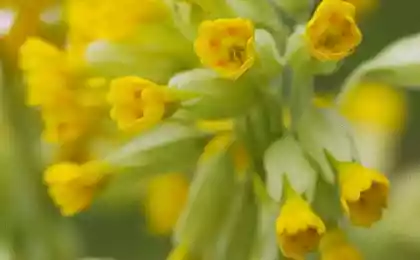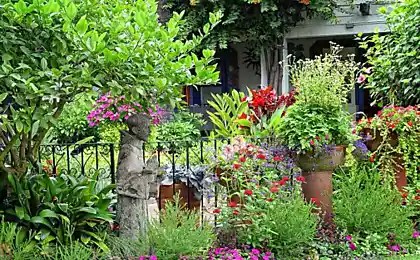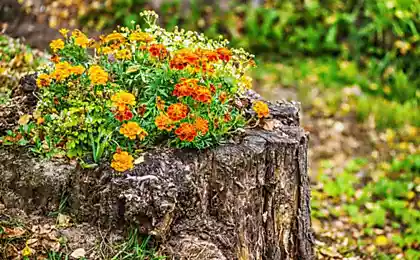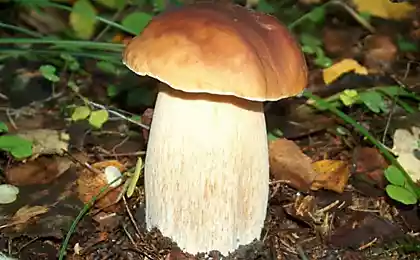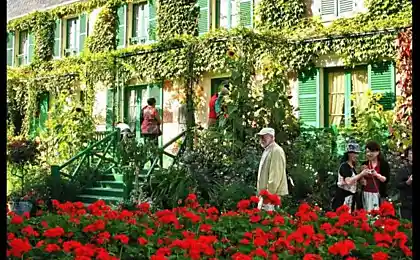449
Primula serrulated: cultivation, characteristics of the species and care.

Elegant spring garden decoration in the form of beautiful balloon blossoms is Primula serrulated. This is one of the representatives of huge kinds of Primroses, which today is often found in the middle zone of Russia and attracts gardeners for its early lush blooms and rich foliage that retains ornamental throughout the season, and also the comparative durability and ruggedness. So, what is a Primula serrulated, growing from seed which is gaining popularity?
Primula serrulated: characteristics of the species As already mentioned, for this typical dense globular inflorescences formed from a variety of white, lilac, purple or ruby flowers. Different varieties flower diameter varies from 0.5 to 2.5 cm, and the flower diameter can reach 10 cm Flower ball rises on strong stems above a rosette of lanceolate, elongated Zelenoborskiy the leaves are light green in color.
Interestingly, at the beginning of flowering the leaves almost invisible, and the flower stalk may rise above the soil surface only 2-3 cm by the middle of flowering, height of inflorescences with peduncles 20-25 cm, and at the stage of ripening of the seeds they grow to 30-50 cm in Parallel with the development of stems and leaves grow. Initially, the appearance of colors, their size does not exceed 5-7 cm, in the midst of flowering length of a sheet of platinum of up to 20 cm When the plant fades and comes to the stage of fruiting, the leaves reach a maximum length of 30-40 cm
Virtually all green parts of the plant are covered with yellowish, farinose, because when watering it is better to avoid getting water on the leaves. Flowering primrose serrulated will start in April and last for 30-45 days.
Primula serrulated: planting and care of Primula toothed, growing from the seeds which is an effective method of propagating plants, thrives best on light nutritious slightly acidic soil in partial shade. Planting needs to be dense about 25 cm between the bushes, so leaves hide the free space.
Care of plants of this species and its individual varieties, in particular, Primula Pont-Pont finely toothed, is to maintain an optimum moisture level, periodic fertilizing, weed removal and protection of primroses from diseases and pests.
It should be noted that in the reproduction of Primula serrulated, requires no special tricks. It is recommended to sow in autumn in open ground. Transplant to permanent place of the primrose is grown for the second year in spring or autumn, but abundant flowering is expected in 3-4 year of cultivation. On light soils often is self-seeding.
Equally effective and vegetative propagation of primroses by dividing the bushes 3-5 year of cultivation, as well as root and leaf cuttings. The perfect time for dividing shrubs is considered to be early spring, because during the later division of the primrose may not be in time for winter to fully take root.
Like some other species of the genus Primula, Primula toothed, growing from seed which is practiced often enough, is considered a hardy plant. But for successful hibernation it requires some preparation. So, for extra protection primrose it is recommended to cover 10-centimeter layer of fallen leaves. Besides voluminous rosettes of leaves formed per season, experienced growers prefer to pull out, leaving about 3-4 leaf plates, thus reducing the risk of plant diseases rot the root collar and the leaves, and also result in more abundant flowering in the following year. If for some reason the leaves were not plucked, they should be removed as soon as the snow melts.
Primula serrulated great for decorating ponds and flower beds, where it goes well with the daffodils, Phlox, violets, low bells, and is also used for distillation and cut.published
P. S. And remember, only by changing their consumption — together we change the world! ©
Source: sadovod-i-ogorodnik.ru


